At the Youth Summit last this week Steve Moore from Channel 4/Policy Unplugged injected a hour-long 'Open Space' session into the more formal structure of the event. Open space ideas also heavily influenced the session design I developed for a series of recent dialogue events between young people, DfES officials and the Minister for Children and Families (at that point, Parmjit Dhanda) looking at the Local Offer. This has got me thinking about what 'Open Space Technology' has got to offer to participation practitioners, and what factors we need to be thinking of when exploring its use.
Open space 'pure': Youth Summit
An open space session does not come with a set agenda, but invites participants to set their own topics of conversation, and to self-select the groups they want to work in and the conversations they want to have. As such – it can give rise to unexpected ideas and important discussions that get missed when too much structure is presented. In the open space session at the Youth Summit, we found young people raising questions about monitoring forms and the length of time change takes. Both topics that were not on the 'agenda' for the main event – but important topics.
Elements of open space: 3D Dialogues
In our dyes Dialogue Days (the 3D dialogues as we called them) were heavily facilitated and structured. But included elements that enabled earlier parts of the dialogue to shape the agenda of later parts – and encouraged self-selection of later discussion topics. Each session included three hours of 'dialogue'.
We spent the first hour of each of each sessions on contextualizing activities – using a 'name-game bingo' activity to explore what the local offer is, and then using a facilitated mapping exercise to create discussion about whether the activities young people have a right to under the local offer are actually available to them.
In the second hour, we used a conventional 'idea-storm' activity to invite ideas on ways in which young people wanted to influence the provision of activities in their local areas – and the ways they wanted to hold local government to account for what is provided. This session ended by inviting groups to prioritise the methods of influence and accountability they felt most important to discuss further.
For the first two session, young people tended to work in groups with those they had come to the dialogue event with (we had up to 30 young people at each event from 3 – 8 different regionally dispersed projects).
Over a break, the facilitates picked out four or five key themes emerging from the idea-storm and priorisation, and selected these as themes for the third hour of discussion. In this way, themes emerging from young dialogue participants influenced the agenda – although the facilitates mediated this process, factoring in considerations of which of the prioritized potential discussion would be likely to have the most relevance to policy topics or official present – or which were 'new ideas' which clearly deserved deeper discussion.
In the final hour – during which the Minister and additional officials joined the sessions – the themes were replayed to the group – and individuals encouraged to choose the theme of most interest to them. Recording flip-charts were given to each group to give some structure to discussions on that theme. Young people were encouraged to select and stick-with a theme, although officials and the Minister were enabled to move around the themes according to interest and relevance. All those gathered around a theme were encouraged to dialogue on it – using the questions on the recording flip-charts as a guide.
Some reflections
I believe participation work is about promoting the ability of those affected by decisions and action to influence those decisions and actions. This involves enabling their voices and views to be heard with authenticity, but also enabling them to engage in practical dialogue on a topic at an appropriate level of complexity. I am continually conscious of the tension between providing the context and structure an individual or group may need to be able to engage with complex questions – and ensuring such context and structure does not harm the authenticity of the views expressed (i.e. does not over-prescribe the range of views that can be expressed and so illicit views from people that they do not genuinely hold*).
At first glance, I think open space has potential to be a weight on the authenticity side of the balance. Forcing us to think critically about whether we really need to provide so much structure for young people to be able to participate and engage in effective dialogue. In the first 3D Dialogue session we ran, we had expected to need to facilitate the final hour of thematic discussions, but found that the groups were far more productive self-facilitating – at least in part because they had chosen the topics out of their own interests.
One concern I have, however, about open space methods is that, unlike some of the more structured activities we had developed, they have a strong bias towards enabling the most articulate and confident to direct and control discussions. I'm sure visual tools and on-verbal processes can be introduced into open spaces – but the need for planned and prepared facilitation and activity to enable disadvantaged groups to participate in a dialogue is often an important element of youth participation. Of course, in an idealistic open space process, we might wish that participants self-facilitate and develop tools to ensure all voices are heard and involved – but expecting this to emerge or occur in a short session is, in almost all cases, unrealistic.
Open space methods can empower young people far more than many conventional participation processes – but don't empower all equally. Open space then, I believe, has a place in the participation practitioners toolbox – but, in most cases, as part of a broader process.
In our 3D dialogues, we could have opened up the third hour more – prepared for the agenda to be more directly set by participants, and equipped participants better to all engage in the dialogue that followed. But we should not abandon the preparation, contextualization and use of creative non-verbal methods that built up to this stage.
And if we are going to use open space tools, we do need to think about where the outcomes go. An open space used as part of a consultation needs to have a clearly defined range of topics – as it is likely to be unhelpful to let conversation range over topics not within the domain of the consultation – and is certainly likely to exacerbate the criticism that many participation processes do not lead to change or even meaninful feedback to those involved.
I'm certainly going to be exploring open spaces more… and I'm sure this isn't the last exploration of its influence on participation that I'll post here…
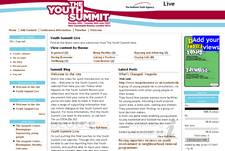 And the plan is that
And the plan is that 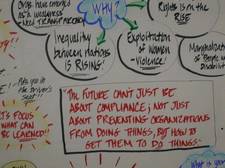 The Civicus Youth Assembly has left its mark on the Civicus World Assembly in
The Civicus Youth Assembly has left its mark on the Civicus World Assembly in 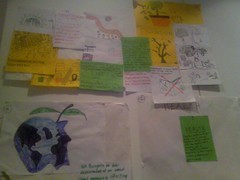 The lack of clarity about purpose continued to dog day 2 of the Youth Assembly, and the three-hour session on 'participation' – far from resolving the challenges – deepend the problems and left a legacy of confusion which hampered youth involvement in the rest of the World Assembly. The Participation sessions in the Youth Assembly programme were introduced as a chance to explore three different methods of participative dialogue – and with external fascilitators the group was split arbitarily into three. I can only reflect on the sub-group I was in, but therein the piecemeal issuing of instructions meant that by the end of an hour of break-out time, we 'discovered' that we were to perform a tableaux communicating a bullet pointed 'issue' affecting young people, and that this issue was to feed back into selecting a set of youth priorities out of the Youth Assembly. Not only were the methods chosen inappropriate for the short time available (trying to develop participative drama in 20 minutes with an international group) but we were given no clear idea of where our inputs were to be used.
The lack of clarity about purpose continued to dog day 2 of the Youth Assembly, and the three-hour session on 'participation' – far from resolving the challenges – deepend the problems and left a legacy of confusion which hampered youth involvement in the rest of the World Assembly. The Participation sessions in the Youth Assembly programme were introduced as a chance to explore three different methods of participative dialogue – and with external fascilitators the group was split arbitarily into three. I can only reflect on the sub-group I was in, but therein the piecemeal issuing of instructions meant that by the end of an hour of break-out time, we 'discovered' that we were to perform a tableaux communicating a bullet pointed 'issue' affecting young people, and that this issue was to feed back into selecting a set of youth priorities out of the Youth Assembly. Not only were the methods chosen inappropriate for the short time available (trying to develop participative drama in 20 minutes with an international group) but we were given no clear idea of where our inputs were to be used.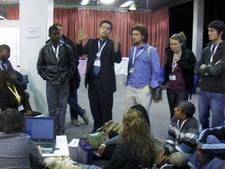 (I'd welcome other Youth delegates reflections on the story of the declarations development – as I had thrown myself into the wider World Assembly by this point, and was only on the periphery of the declaration drafting)
(I'd welcome other Youth delegates reflections on the story of the declarations development – as I had thrown myself into the wider World Assembly by this point, and was only on the periphery of the declaration drafting)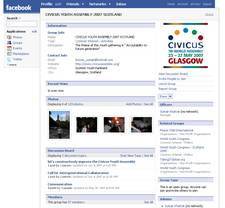 I took part in a few discussions on the Civicus Assembly website forum before the event, and I
I took part in a few discussions on the Civicus Assembly website forum before the event, and I